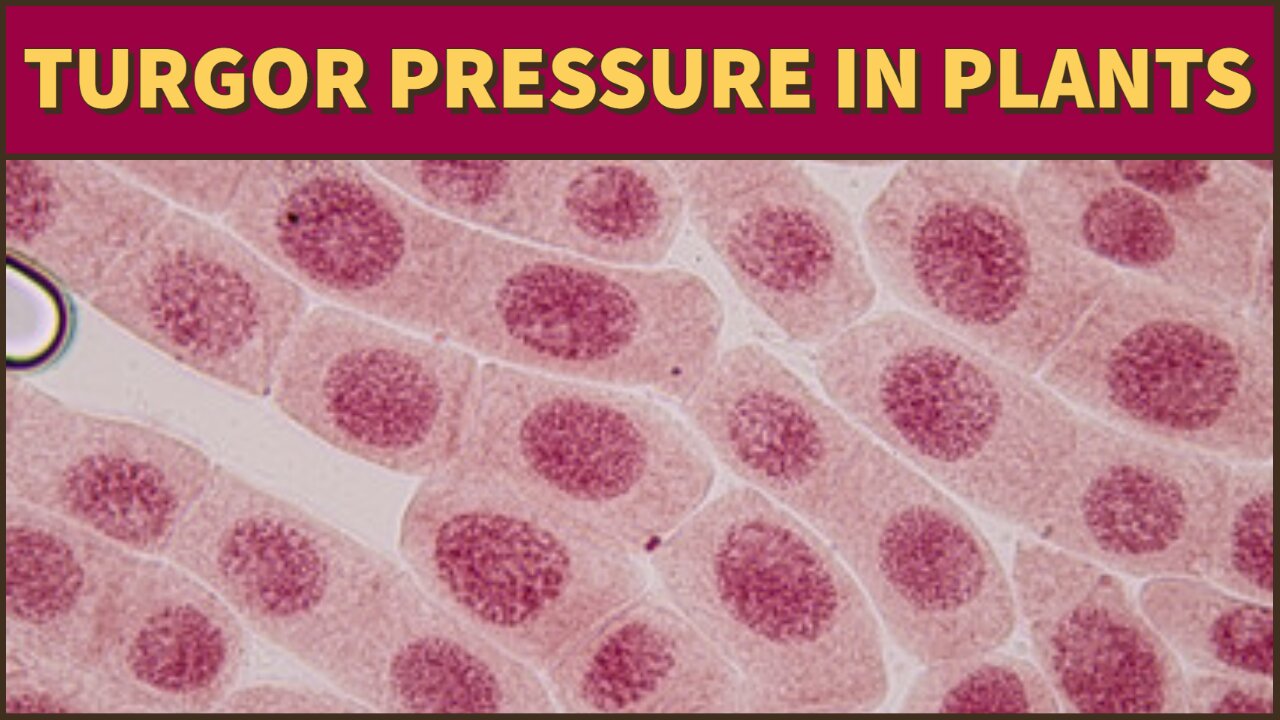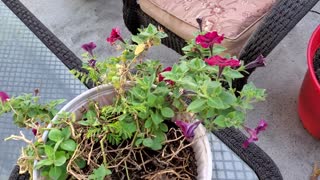Premium Only Content

What is Turgor Pressure in Plants ?
Water and various particles travel into and out of cells across a filmy, selectively permeable membrane called the cell membrane.
There's a distinct pattern to this movement: Water with a lower concentration of particles will flow across the membrane into water with a higher concentration of solute particles until the concentration is balanced across the membrane.
That's called osmosis.
In people (and all animals), cell membrane stretch as the cell takes on water.
Rapidly flooding the body which too much dilute water can bloat and even burst the cell membrane in a rare condition known as water poisoning.
Plant cells, however, have a special feature that allows them to use the pressure of water inside the cell as a kind of skeleton. A tough cell wall surrounds the delicate membrane, preventing it from overexpanding.
Instead, when the cell is swollen with water, its membrane presses out against the cell wall stiffening the cell.
This is called turgor pressure, and it keeps the plant sturdy and upright.
In drought conditions, on the other hand, there's more pure water inside the cell than in the surrounding environment, so water drains from the cells.
They lose their turgidity, and the plant droops.
But the cell wall helps protect the cells from deformation.
If rain comes soon enough, the plant perks up.
-
 1:07
1:07
Georgiahightower
2 years agoPotted Plants, What kind....?
199 -
 0:54
0:54
encouraginginspirationalword
2 years agoShaq What is pressure
4 -
 0:58
0:58
CinemaDeconPodcast
2 years agoClassic Scene - Idiocracy - What Plants Crave
650 -
 3:59
3:59
Melissa K Norris
2 years ago $1.31 earnedWhat Pressure Canning REALLY Does to Broth!!
1.68K10 -
 36:25
36:25
Grumpy Acres Farm
2 years agoWhat the pressure canning chicken weekend looked like
9 -
 0:08
0:08
chatterbox91
2 years agoWhat is pressure doing to you #shorts
1 -
 7:12
7:12
SWMom17
3 years ago $0.01 earnedWhat is this white stuff on my plants?
331 -
 2:49
2:49
KELANGKANG
2 years agoWhat should be the lifestyle changes to treat High Blood Pressure
11 -
 LIVE
LIVE
GritsGG
11 hours agoWSOW Group Stage Final Day! Most Wins 3080+! 🔥
55 watching -
 1:22:29
1:22:29
Dr. Drew
1 day agoJenny McCarthy: After Son's Near-Death Reaction & Autism Diagnosis, Star Fights For Safer Childhood Vaccines w/ Alison Morrow – Ask Dr. Drew
52.6K12